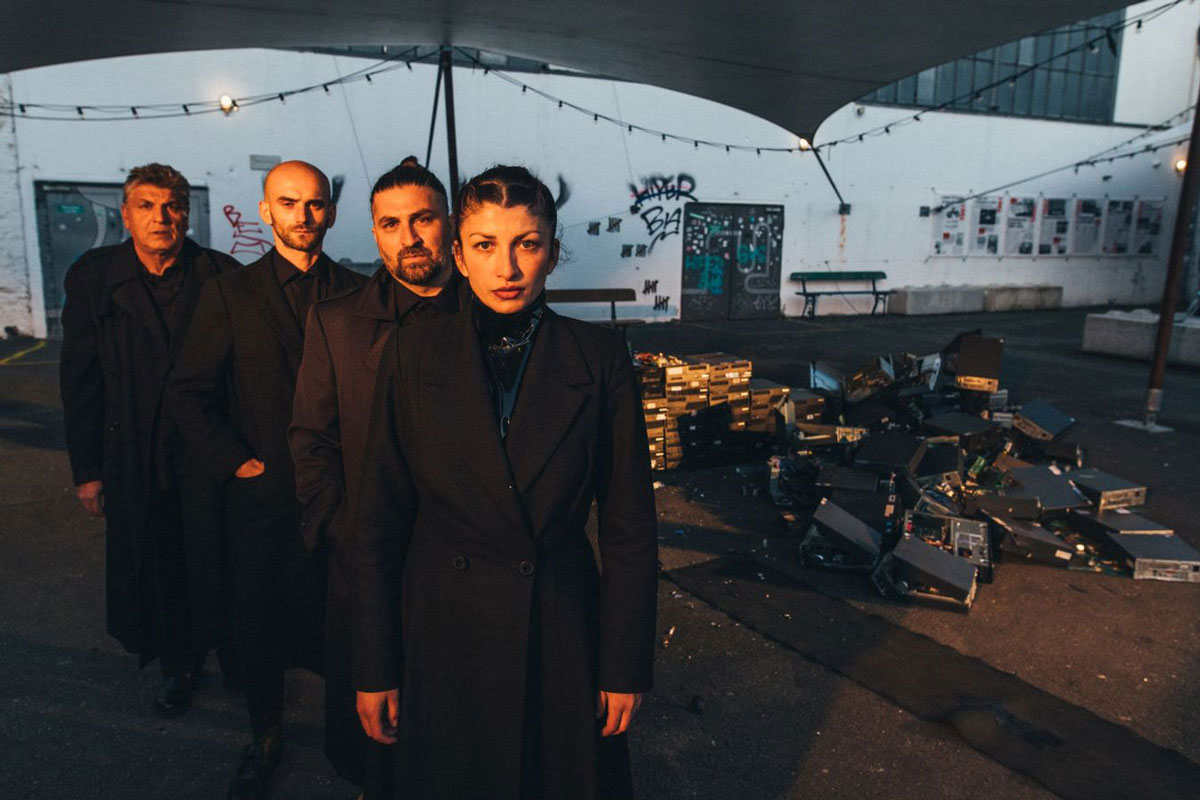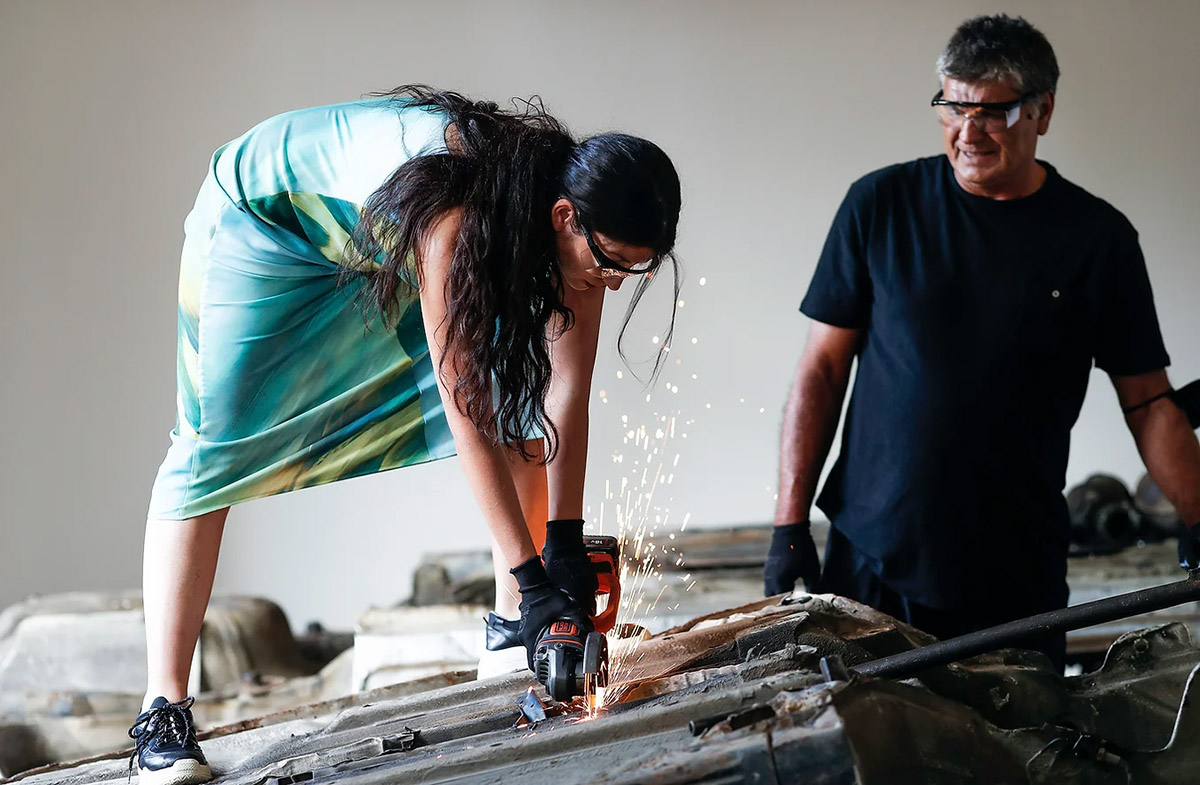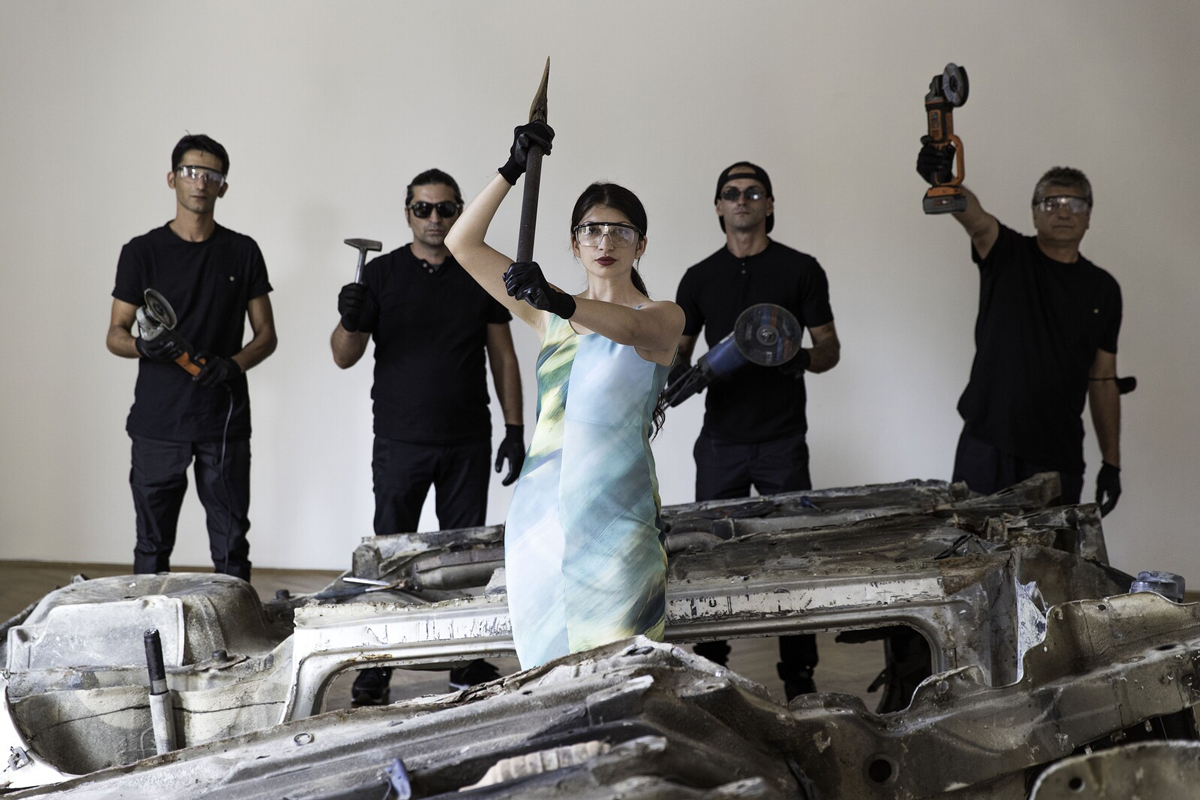ART CITIES: Berlin-Selma Selmane
 Selma Selman’s artistic process echoes the older tradition of a polymath artist ethically synthesizing technological and ecological tools to resolve the conflicts typical for social engagement. Repeatedly evoking the motif of scrap metal collection and recycling, Selman invites us to question the ways in which we assign value to objects, labor, and human beings.
Selma Selman’s artistic process echoes the older tradition of a polymath artist ethically synthesizing technological and ecological tools to resolve the conflicts typical for social engagement. Repeatedly evoking the motif of scrap metal collection and recycling, Selman invites us to question the ways in which we assign value to objects, labor, and human beings.
By Efi Michalarou
Photo: Gropius Bau Archive
Selma Selman’s practice stems from her personal experience investigating notions of oppression, patriarchy, women’s rights, desires and the frictions that lie between collective and personal action. Her multidisciplinary approach uses performance, painting, photography and video to dissect the borders of identity, currency, law and the burden of representation placed upon her, her family and her community. A transformative potential, rooted in poetry, is present throughout her oeuvre and lies at the core of her solo exhibition “her0”, which is the first presentation in Berlin providing an overview of Selman’s practice. The title refers to the word “hero”, combining “her” and the number 0 as a potential for change. The entry point of the presentation is her evolving performance, “Motherboards” (2023–ongoing). The performance involves a process of extraction of gold from scrap metal. Using axes and drills, performers reflect this material act into a musical soundscape, performed with a sound designer and a cellist. Integral to this work is the collaborative labour of her family, members of the Romani community, who together with Selman source the raw material – that to this day sparks desire and destruction – from seemingly worthless e-waste. This act of recycling confronts her family’s economic activity as part of a marginalised group, grappling with violent biases and offering insights into dynamics of power that shape current ideas about sustainability and also reflects on value creation in the art market. As she says “In the 21st century, I believe the Roma are the planet’s leading social, ecological and technological futurists. For roughly 100 years, we have been recycling waste to self-sustain as an oppressed minority within Western modernity – which is just now realising the moral, socio-economic and ecological value of such a practice.” Subsequently, with the collaborative support of the Romani community, theorists, technicians, chemists, scientists and organisers, she transforms the extracted raw material into one sculptural tool: a golden nail. The exhibition shows a cross-section of Selman’s oeuvre, merging remnants of Motherboards with a variety of past and new works. It revolves around desire and self-determination, uniting both the pioneering and activist aspects with the functional character of Selman’s approach. The presentation at the Gropius Bau continues with videos, an installation and paintings as well as the newly-produced sculpture “Satellite” Dish. The smaller scale series “Superpositional Intersectionalism” (2020–ongoing) and “Metal Paintings” (2018–ongoing) are interwoven throughout the space, blending boldness with intricate fragility. The video “Mercedes Matrix” (2019) documents a performance in which Selman and her family dismantle a Mercedes-Benz, thereby revealing the foundation of their long-standing practice centred on deconstruction and reversed exploitation. The monumental painting “Dirt 0” (2021) echoes abstract painting, but is instead created with car waste such as iron dust, dirt and leaking liquid, sourced directly from the loading area of her father’s van. Spread across the exhibition space, the series “Metal paintings” (2018–ongoing) marks the beginning of Selma Selman’s artistic study exploring the links between metal waste, technology and art. While the planet’s metal has epic origins, originating from a potentially devastating apocalyptic meteor storm 200 million years ago, Selman’s relationship to this material is one of basic survival, having worked in a scrapyard as a teenager. In a playfully humorous way, she combines impressions from her everyday life with references to art history and text collages onto various metal objects. “Six pieces of Mercedes-Benz” (2022) evokes delicate body forms that stretch over disassembled parts of a Mercedes car, a symbol of capitalist desire. Arranged like an altar, the cold metal surfaces of what once represented masculine power are softly taken over by long, spider-like limbs and organic shapes. By creating a new anatomy, Selman reanimates this discarded object in a process she calls “undeading”, lifting the distinction between human and machine, subject and object. Selman’s drawings “Superpositional Intersectionalism” (2020–ongoing) look to quantum theory to challenge preconceived notions of opposites and contradictions. Desires around belonging and the constant movement and displacement of bodies are central to the sculpture “Satellite Dish” (2023), shown for the first time at the Gropius Bau, which refers to longing, distance, connection and time. The exhibition concludes with “Letters to Omer” (2021) a lyric performance in which Selma Selman addresses her intimate feelings and desires to a fictional character named Omer. Narratives about femininity, sexuality and patriarchy intermingle with visions of a better world.
Photo: Selma Selman, Motherboards, performance 2023, KRASS Kultur Crash Festival, Hamburg, photo: Mario Ilić, © & Courtesy the artist
Info: Curator: Zippora Elders, Assistant Curators: Monique Machicao y Priemer Ferrufino and Elisa Maria Schmitt, Gropius Bau, Niederkirchnerstraße 7, Berlin, Germany, Duration: 11/11/2023-14/1/2024, Days & Hours: Mon & Wed-Fri 11:00-19:00, Sat-Sun 10:00-19:00, www.berlinerfestspiele.de/gropius-bau


